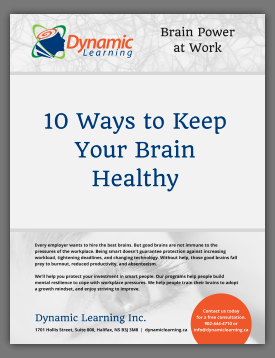Question: Would you like to improve your creativity, your productivity, and your accuracy at work while at the same time reducing your stress level?
Answer: Stop multitasking.
Neuroscientists have known for years that human beings cannot multitask. Recent articles from Psychology Today, the Harvard Business Review, and Fortune magazine provide clear explanations of why this is true, but here is the basic information.
Multitasking means doing two or more tasks which require high-level brain function at the same time. For example, talking on the phone to a client while typing a report, or taking part in a meeting while texting someone.
In order to multitask, our brains have to take two steps in rapid succession. The first is switching focus from one task to another. The second step is rule activation. Your brain has to turn off the rules of how to complete the previous task and turn on the rules for the new task. It is like having a searchlight in the dark. When your focus is switched on in one direction, that focus lights up your attention, while whatever you were doing previously goes dark. Then the rule activation for the second task kicks in. If within a few seconds, you switch your focus back to the first task, your brain has to start the two-step process again.
So when you think you are multitasking, you are actually switching your attention and turning the respective rules on and off in rapid succession. The switches are fast (tenths of a second), so you may not notice them, but those delays and the loss of focus add up. If you understand that the task you are not focusing on is in the dark, when you go back to it and light it up again, it is very easy to miss something.
This start/stop/start process is hard on us.
Rather than saving time, it costs time (even very small microseconds). It’s less efficient, we make more mistakes, and it can become energy-draining and stressful.
During many years of teaching people about their brains, I have had them do a simple task where they move rapidly between writing the letters of a phrase and printing numbers. I ask them to work as quickly and neatly as they can, and I time them with a stopwatch. After the time is up, I ask them to show their efforts to a colleague. Often there is rueful laughter when they notice the messy writing and mistakes each one made.
Then I let them do the same task again, except that they are allowed to complete writing the phrase first and then print the numbers. Without fail, they complete the task more accurately in half the time. This time when they compare notes, they agree they have done a better job, in less time and with less stress.
Here’s what to do about it.
Prioritize. Your pre-frontal cortex, just behind your forehead, is where you do most of your really valuable thinking. As David Rock says, “The pre-frontal cortex is the Goldilocks of the brain. It has to have everything just right or it doesn’t function well.” To use this precious resource to its highest potential, prioritize, prioritize, prioritize. Focus on one thing at a time. Switching between tasks drains energy from your pre-frontal cortex very rapidly, causing you to take longer to complete the tasks and to make more mistakes.
Remove distractions. Being “always on” – plugged into your phone, email, and social media – leads to exhaustion. Shut them down before you try to concentrate.
Give yourself a time limit (10 to 40 minutes) to work on one task and see if you can complete it better, faster, and with less energy.
Focus your attention on the most important, sometimes the most difficult, task of the day first. Approach it in an alert and interested frame of mind. Imagine the satisfaction of having it done, balanced with a mild fear of what could go wrong if it is not done. We tend to ‘walk toward reward, but run away from punishment’, so use that to keep yourself energized and focused.
One final word about multitasking. Please mute and put away your phone while you drive. Being able to pay attention to your driving while on the phone is a delusion. When David Strayer and his colleagues observed 56,000 drivers approaching an intersection, they found those on their cell phones were more than twice as likely to fail to heed the stop signs. In 2010, the US National Safety Council estimated that 28% of all deaths and accidents on highways were the result of drivers using phones.


